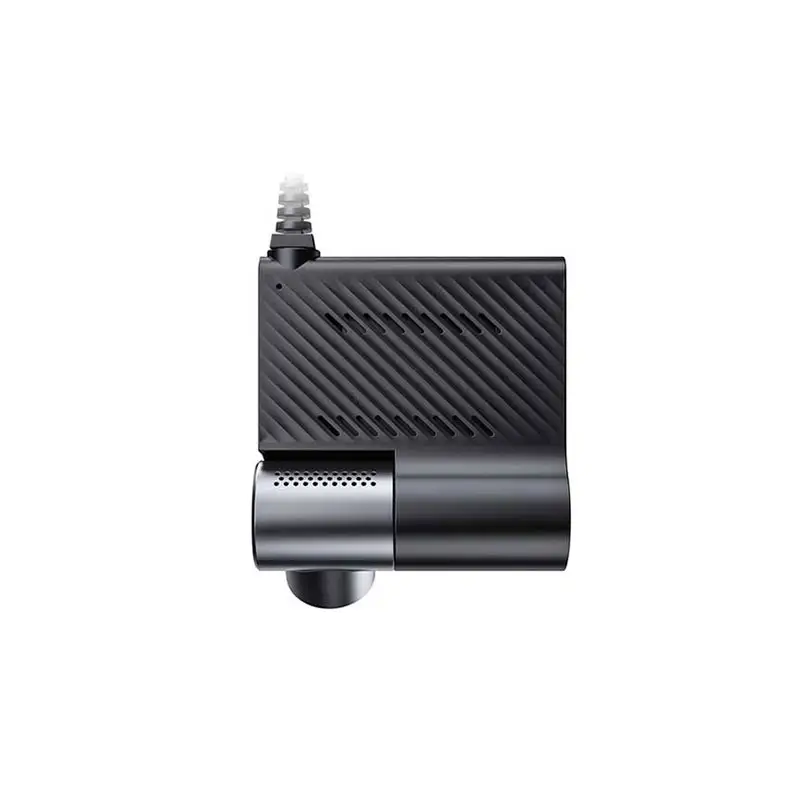What is a 4G LTE Connected Dash Camera?
Dash cameras are getting fancy-worded And we're not just talking about this dash camera! An internet connected 4G LTE dash camera is an industry first by taking the regular ole' dash cam and adding some high tech features like GPS tracking, video compression and live streaming into the mix. These dash cams use cellular network to provide all users live video streaming, remotely monitor, instant alarm by Smartphone anywhere in the world, help defend your safety and security. Unlike previous generations that relied on local storage or a Wi-Fi connection, these modern cameras use mobile data networks to directly upload video. User reviews & field reports show how far this technology has come from the clunky VHS-style units of the 1980's to today's modern, sleek units, putting powerful vehicle tracking into the hands of both large and small fleet managers.
Beyond Basic Recording: Core Technology Explained
Exploring the heart of 4G LTE dashcam tech You can now do more than just simple recording with 3G and 4G LTE connected dash cameras. Using cellular networks, they support cloud storage services to improve the security and convenience of data storage and retrieval, and to avoid the risk of losing footages when the device is destroyed or unavailable. These technological enhancements vastly improve the user experience as one can now stream videos onto mobile devices and view live feeds from anywhere. "Connectivity is a crucial component of today's vehicle safety system thanks to its ability to send alerts as soon as an event happens, and the in-vehicle modem guarantees greater safety and peace of mind for drivers and fleet managers.
Real-Time Remote Access & Live Vehicle Monitoring
The most salient feature of upgrading to a 4G LTE dash cam is what you're all here for: LTE connectivity, which provides users continual monitoring of what's going on with their vehicles—be it for security or fleet management. This can result in quicker emergency response times, which could help lower insurance premiums through increased safety. Insurance company data highlights a decrease in time to claims, demonstrating the effectiveness of real-time alerts and surveillance capabilities in LTE dash cams. Quick and accurate coverage of incidents means that users will have the upper hand when it comes to solving the case.
Enhanced Cloud Storage & Instant Incident Detection
Cloud-compatible 4G LTE dash cameras could be a secure way to store footage, making sure that video footage is recoverable when needed. This also puts to rest worries about loss of data from damage or theft of a camera. A xi D2DASPECTOF these cam eras is instant incident detection, which sends speedy notifications to the police in the case of (for example, accidents or theft. There are many examples from real life that prove the benefits of such a sophisticated accident detection and cloud saving: several case studies already attest to how greatly it has helped during the insurance claim process or an accident inspection. LTE dash cams provide a huge leg-up in the efficient handling of car accidents, storing video securely and providing instant notifications to users with uploaded footage.
In conclusion, the advantages associated with upgrading to a 4G LTE dash cam extend beyond just basic recording capabilities to encompass an extensive array of safety and monitoring features that ensure continuous protection of your vehicle and data.
Performance Advantages Over Traditional Models
Overcoming Limitations of Non-Connected Dash Cams
Traditional dashcams have been vehicle security mainstays for a long time with significant limitations including the inability to connect or limited storage limits. This cameras will usually record locally and save video on a SD card, but you will find your sd card fills up quickly and ends up having to be reformatted if you're not paying attention to it. 4G LTE dash cams on the other hand solve this with the promise of forever free cloud storage, so that all recordings are safe and available when you need them.
Connectivity options What makes 4G LTE dashcams so valuable is their real-time viewing and remote-access capability. That means, consumers are able to watch a live stream of their vehicles remotely at any time, from smartphones or computers, filling the connectivity gap left by previous models. Lots of studies show that users have a strong preference for connected dash cams over non-connected versions, with increased peace of mind being cited as a primary motivator.
Superior Video Quality and Data Accessibility
A percentage of the 4G LTE dash cam performance can be attributed to higher quality video and improved data availability. These premium models offer better image resolution and clarity compared to older models making sure every moment is recorded – perfect for evidential purposes following accidents or incidents. Reports from users often quote user satisfaction with the obvious improvements in the quality of videotape that allows better documentation, making it easier to identify important facts.
The capability to access this high quality footage through cloud-based systems also represents a major breakthrough in data accessibility. With the ability to extract and manage the footage just about anywhere thanks to internet access, users can share video with insurers or authorities upon request. The high satisfaction from users on the effortless data access from 4G LTE dash cams majorly proves that they are much better than the traditional dash cams.
Key Considerations Before Upgrading
Understanding LTE Subscription Plans and Costs
First and foremost it is important to understand that there are different subscription plans prior to upgrading to a 4G LTE dash cam. Manufacturers often offer a variety of plans, possible including such features as real-time alerts, streaming video and differing data limits. These plans typically have a monthly fee that can range in price depending on what features you get and how much data your driving patterns will consume. When weighing cost-benefit, also evaluate possible insurance premium discounts; some insurers will take into account a connected dash camera when pricing policies. Finally, reviews and market comparisons of leading LTE plans can guide you into choosing a plan that offers the most value for what you need, as opposed to what you won’t use, meaning you won’t be left with data that you are overpaying for.
Installation and Power Requirements Simplified
The installation of a 4G LTE dash camera can be simple or complicated, depending on how you go about it. Readers who are handy with a wire and who want to DIY it may decide to follow the manufacturer instructions on how to mount and wire up the dash cam, but regardless of whether you do that or get a shop to do the work, professional service promises better placement of cameras and wiring, since it really would be better to keep the power flowing. The majority of LTE dash cams must be connected directly to your car’s power source in order to function at all times. The trade-off between the vehicle's VCC (Vehicle Constant Current) and an external battery pack is important and also affects battery life and flexibility. You can use a checklist or all-in-one tools to make the implementation less of a hassle and more a success.
Future-Proofing Your Vehicle Security
Providing more security features for the new age has to be future proof vehicle technologies such as the 4G LTE dash cam. These cameras have come a long way since and they now have features like live access, cloud storage and remote monitoring. These trends are guiding by building a solid surveillance system that supports evidence search among incidents and easily copes with the new automotive technologies, ensuring for a safe and flexible driving experience.
FAQ Section
How does a 4G LTE connected dash camera differ from a traditional dash camera?
A 4G LTE connected dash camera utilizes cellular networks for real-time video streaming, remote monitoring, and instant data uploads, whereas traditional dash cameras primarily rely on local storage or Wi-Fi without immediate connectivity.
What are the key features of a 4G LTE dash camera?
4G LTE dash cameras offer features such as real-time remote access, enhanced cloud storage, live vehicle monitoring, superior video quality, and instant incident detection, providing comprehensive vehicle protection and data security.
Are there subscription fees associated with 4G LTE dash cameras?
Yes, 4G LTE dash cameras typically require a subscription plan for features like real-time alerts and live streaming, with costs varying based on the data allowance and features provided by the plan.
Is professional installation necessary for 4G LTE dash cameras?
While DIY installation is possible, professional installation ensures optimal camera placement and wiring, especially for the continuous power supply required. Consulting manufacturer guidelines or online resources can assist in the process.
Table of Contents
- What is a 4G LTE Connected Dash Camera?
- Beyond Basic Recording: Core Technology Explained
- Real-Time Remote Access & Live Vehicle Monitoring
- Enhanced Cloud Storage & Instant Incident Detection
- Performance Advantages Over Traditional Models
- Overcoming Limitations of Non-Connected Dash Cams
- Superior Video Quality and Data Accessibility
- Key Considerations Before Upgrading
- Understanding LTE Subscription Plans and Costs
- Installation and Power Requirements Simplified
- Future-Proofing Your Vehicle Security
- FAQ Section



